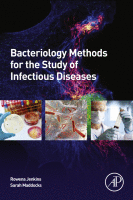Browse content
Table of contents
Actions for selected chapters
- Full text access
- Book chapterAbstract only
Chapter one - Fundamental skills for infectious disease research
Pages 1-26 - Book chapterAbstract only
Chapter Two - Bacterial growth in solid and liquid media
Pages 27-52 - Book chapterAbstract only
Chapter Three - Microscopy and staining
Pages 53-72 - Book chapterAbstract only
Chapter Four - Antimicrobial testing
Pages 73-97 - Book chapterAbstract only
Chapter Five - Cell culture-based infection models
Pages 99-114 - Book chapterAbstract only
Chapter Six - Biofilm models to understand infectious diseases
Pages 115-133 - Book chapterAbstract only
Chapter Seven - Gene expression analysis
Pages 135-164 - Book chapterAbstract only
Chapter Eight - Screening for common virulence traits
Pages 165-186 - Book chapterAbstract only
Chapter Nine - Community composition studies
Pages 187-201 - Book chapterAbstract only
Chapter ten - Invertebrate infection models
Pages 203-214 - Book chapterNo access
References
Pages 215-216 - Book chapterNo access
Index
Pages 217-222
About the book
Description
Bacteriology Methods for the Study of Infectious Diseases provides knowledge, understanding and experience of contemporary, robust methodologies for studies into the pathogenicity and virulence of human/animal bacterial pathogens. This book presents contemporary, yet widely utilized methodologies, for the study of pathogenicity and virulence in bacterial pathogens of human and/or animal origin. Protocols are clearly outlined, with lists of required equipment and reagents, alongside underpinning theory. This text will provide undergraduate and postgraduate students with practical guidance for dissertation projects with protocols for individual project ideas that can be developed further, hence a starting point for additional literature searches is also provided.
Bacteriology Methods for the Study of Infectious Diseases provides knowledge, understanding and experience of contemporary, robust methodologies for studies into the pathogenicity and virulence of human/animal bacterial pathogens. This book presents contemporary, yet widely utilized methodologies, for the study of pathogenicity and virulence in bacterial pathogens of human and/or animal origin. Protocols are clearly outlined, with lists of required equipment and reagents, alongside underpinning theory. This text will provide undergraduate and postgraduate students with practical guidance for dissertation projects with protocols for individual project ideas that can be developed further, hence a starting point for additional literature searches is also provided.
Key Features
- Helps users research dissertations and interdisciplinary research projects
- Presents a valuable resource that enables researchers from diverse backgrounds to undertake research within the field of infectious diseases
- Summarizes protocols that give a fundamental start to research, but are highly adaptable or can be built upon and integrated into other methodologies
- Provides knowledge, understanding and experience of contemporary, robust methodologies for studies into the pathogenicity and virulence of human/animal bacterial pathogens
- Helps users research dissertations and interdisciplinary research projects
- Presents a valuable resource that enables researchers from diverse backgrounds to undertake research within the field of infectious diseases
- Summarizes protocols that give a fundamental start to research, but are highly adaptable or can be built upon and integrated into other methodologies
- Provides knowledge, understanding and experience of contemporary, robust methodologies for studies into the pathogenicity and virulence of human/animal bacterial pathogens
Details
ISBN
978-0-12-815222-5
Language
English
Published
2019
Copyright
Copyright © 2019 Elsevier Inc. All rights reserved.
Imprint
Academic Press
